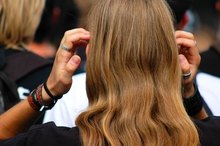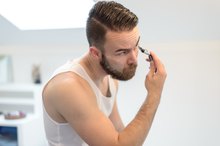During What Season Does Human Hair Grow the Fastest?
We have hair all over our bodies. Hair grows from the root, which is under the skin and is the only part of the hair that is alive. The rest of the hair is made up of dead protein cells.
Hair Growth Speed
Hair growth rate is genetically determined, and varies from person to person. It also grows more slowly with age, and is affected by both internal states and environmental conditions.
Hair Growth in the Summer
How Long Does it Take for Hair to Grow?
Learn More
Hormones released in the body during the summer season can increase the rate of growth. However, the increase in growth rate is so small that it is likely to go unnoticed.
Other Changes in the Summer
Researchers report that while hair grows, hair shedding also increases in spring and summer. By fall, a person may lose as many as 100 hairs per day. This shedding may also affect hair growth, and varies from person to person.
Research suggests that hair shedding is related to daylight, and that reducing exposure to sunlight may help prevent seasonal hair shedding.
- Researchers report that while hair grows, hair shedding also increases in spring and summer.
- This shedding may also affect hair growth, and varies from person to person.
Hair Growth Cycles
On What Part of the Body Does Hair Grow the Fastest on a Normal Man's Body?
Learn More
It sometimes seems as if your hair is growing fast. Just two weeks after a haircut, you may notice the need for a trim. Then, suddenly, the growth seems to slow down or stop; you go many weeks in a row during which your hair seems to stay exactly the same length. What's happening here?
Not only does hair grow faster in the summer, but it goes through cycles of growth and rest all year long 2. Each complete cycle typically lasts several weeks.
- It sometimes seems as if your hair is growing fast.
- Then, suddenly, the growth seems to slow down or stop; you go many weeks in a row during which your hair seems to stay exactly the same length.
More About Hair Growth Cycles
There are three stages of hair growth: anagen, which is the active growth phase; catagen, a transitional stage; and telogen, a resting phase 2. Three percent of hair is in the catagen stage at any time. During the anagen growth phase, hair typically grows about one centimeter per month.
The active growth phase is called anagen. The transitional stage is called catagen. The resting phase is called telogen.
- There are three stages of hair growth: anagen, which is the active growth phase; catagen, a transitional stage; and telogen, a resting phase 2.
- The transitional stage is called catagen.
Related Articles
References
- Dermatology: Control of hair growth
- Miranda BH, Charlesworth MR, Tobin DJ, Sharpe DT, Randall VA. Androgens trigger different growth responses in genetically identical human hair follicles in organ culture that reflect their epigenetic diversity in life. FASEB J. 2018;32(2):795-806. doi:10.1096/fj.201700260RR.
- American Academy of Dermatology. Alopecia areata: self-care. 2019.
- Piérard-franchimont C, Piérard GE. Alterations in hair follicle dynamics in women. Biomed Res Int. 2013;2013:957432. doi:10.1155/2013/957432.
- Torkamani N, Rufaut NW, Jones L, Sinclair RD. Beyond goosebumps: does the arrector pili muscle have a role in hair loss?. Int J Trichology. 2014;6(3):88-94. doi:10.4103/0974-7753.139077.
- Miranda BH, Charlesworth MR, Tobin DJ, Sharpe DT, Randall VA. Androgens trigger different growth responses in genetically identical human hair follicles in organ culture that reflect their epigenetic diversity in life. FASEB J. 2018;32(2):795-806. doi:10.1096/fj.201700260RR.
- Harvard Medical School. Telogen effluvium. April 2019.
- American Academy of Dermatology. How Hair Grows.
- Breitkopf T, Leung G, Yu M, Wang E, McElwee KJ. The basic science of hair biology: what are the causal mechanisms for the disordered hair follicle? Dermatol Clin. 2013 Jan;31(1):1-19.
- Ohyama M. Hair follicle bulge: a fascinating reservoir of epithelial stem cells. J Dermatol Sci. 2007 May;46(2):81-9.
Writer Bio
Kath Bee has written more than 1,000 published articles on medicine, nutrition, fitness, longevity and health law. She has been a university writing instructor. Bee holds a master's degree in English and has done post-graduate work in psychology and research methods.








